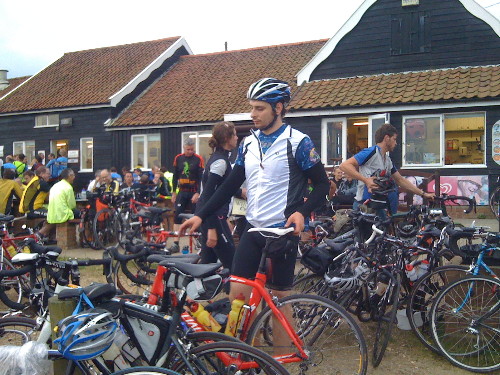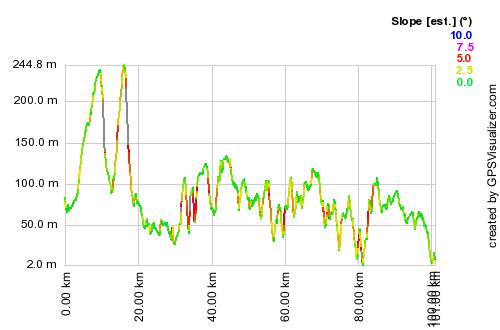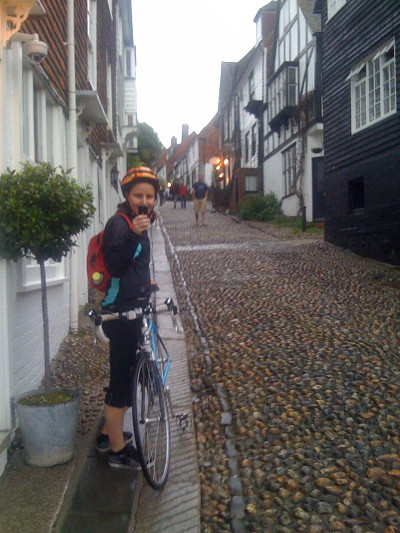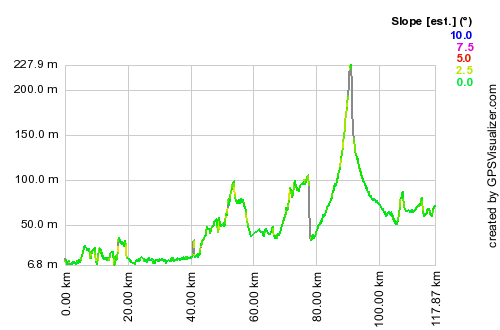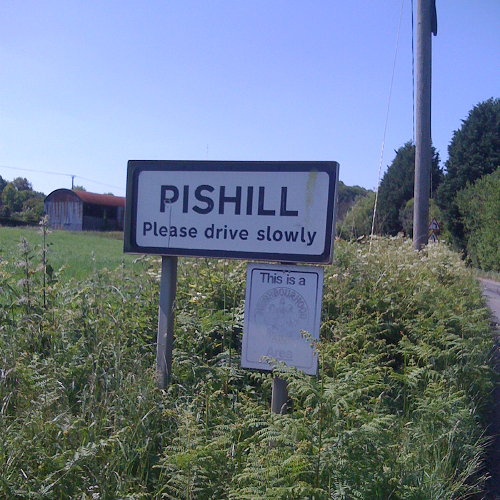So, I ran in the Nike Grid ARG (alternative reality game) on Saturday, concentrating mainly on the E9 postcode in Hackney, but also going jogging around the City of London (EC1, EC2, EC3 postcodes) doing an informal City of London Race. The aim of the game was to log runs between four specially designated phoneboxes in each postcode, dialing in at the start and end of each leg. The more legs done, the more points you got – bonus points were available for running early/late, doing a fast run, completing every possible leg, and the most number of legs.
My strategy was hampered by having a severe hangover from the night before, so I didn’t make it out of the house until 3pm (the game ran from 8pm-8pm) and was pretty dehydrated. It was also a very warm day – and, to make things worse, the phoneboxes themselves acted as heat reservoirs. One City leg went via a supermarket and its chiller cabinet…
In my first session I essentially ran all of the six possible legs between the four phoneboxes, and several extra legs between the two closest ones. In the later session (after my jog around the City) I again aimed to run all six possible legs, getting the fastest split bonus for each, but realised near the end I wasn’t going to make it to/from the far one, so repeated some of the smaller legs. The many people enjoying a cool drink in the garden outside the Royal Inn on the Park, immediately opposite the most southerly phonebox, must have wondered what was going on.
The map below shows the routes I took between the four phoneboxes, marked with green rectangles:
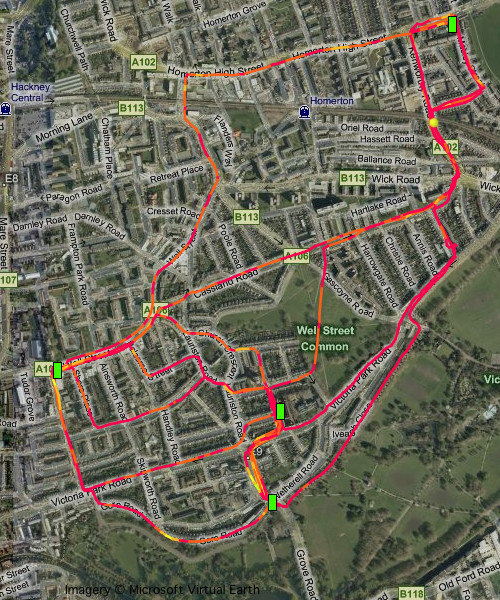
In total I ran around 16.5km (10 miles) in the E9 postcode. The phonebox dialing process meant I essentially had a two minute rest after every leg – the longest of which I did in just under 10 minutes. My shortest leg was 1m 26 – I tried this one again and again but my times kept getting worse with each attempt!
I ran into the last box about 10 seconds before the game closed – I had to push it for this final leg and got bonus points for running this leg in the fastest time. (In fact I think I picked up all six of the fastest leg bonuses during the day.) The Nike team were filming this last phonebox and interviewed me afterwards.
I was extremely unlucky not to win – notice how close I finished to the eventual winner in the leaderboard below. However I did get 110 of my points in the dying seconds of the race. The guy who finished third appeared at the same phonebox a minute later (i.e. too late) and, had our arrivals been reversed, he would have finished in front of me.
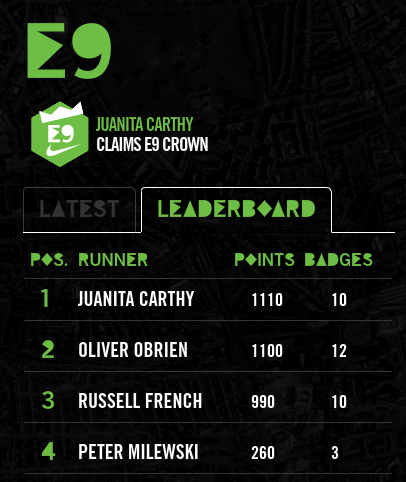
Although I didn’t win, a friend won not once but twice in a different postcode, so I’ll at least get to see what prizes I missed out on!
There were some “bugs” in the game – certain phoneboxes in the City had quite unresponsive keypads which made it difficult to clock in at the end of the leg. Quite often, the automated service appeared overloaded and stopped talking half-way through, leaving you wondering whether the run had been correctly logged or not. The game leaderboard was updated in real time, which was impressive, but it was written in Flash so I was unable to see how I was doing on my iPhone. (A dedicated iPhone app would have been cool.) There luckily weren’t many players in my postcode, but many more would have clogged up the system – it took 1-2 minutes in the phonebox to stop and start each leg. Some clarity on how many points were on offer would have helped me refine the strategy, although I suppose part of the challenge is figuring it out for yourself. A couple of “test” 3am short legs I tried on my way back from the pub didn’t count for “early” bonus points, although game messages suggested they would at that time. Finally the maps weren’t too great – some phoneboxes were in the wrong place. I had however done a bit of online research first though and used a marked orienteering map instead, so this didn’t affect me. A friend of mine greatly benefited from one phonebox not being themed – he was the only person in that postcode who realised it was still a game phonebox and so completely destroyed the opposition.
It must have been a nightmare to organise, with nearly 150 postboxes scattered across many miles that needed theming, maps distributed to them, checking and fixing them – not to mention answering the many and varied questions and complaints on the Facebook event page, and writing the software to handle the automatic logging, updating and cheat detection.
Overall I really enjoyed the style of the event. There was definitely something of “The Matrix” about sprinting through the grimy streets to a phonebox (themed in green and black, too!) and breathlessly grabbing the receiver in front of surprised bystanders. All things considering, it was a nice “Real Life 2.0” take on the street orienteering theme. Not sure we’ll see this repeated – Nike generally organise a “concept” event in London yearly but each year’s idea changes dramatically to keep things fresh – however I would certainly love to try it again.
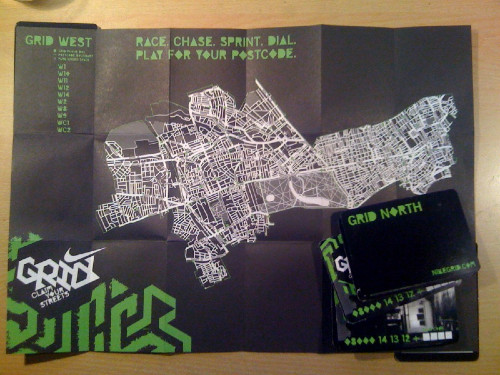
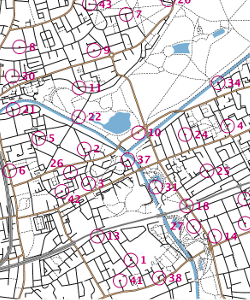
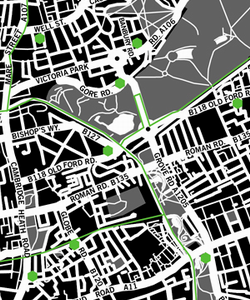
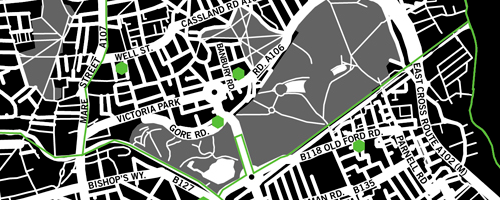
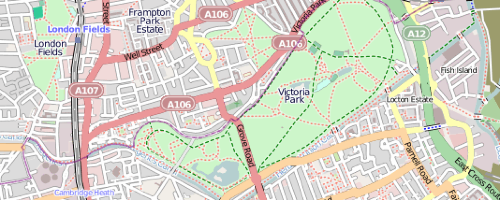
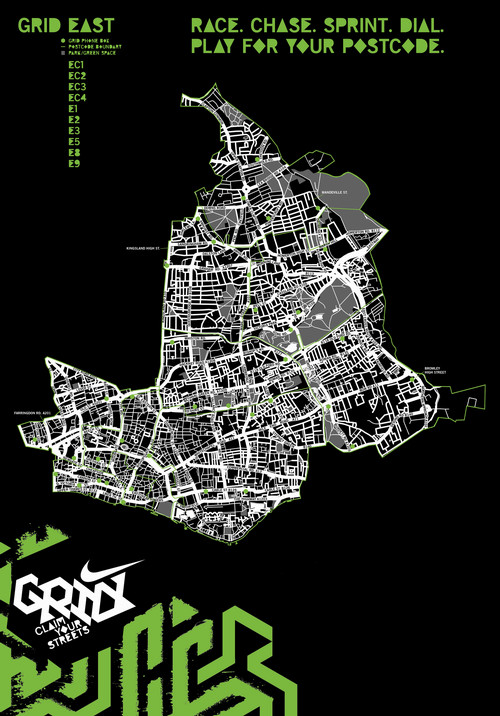


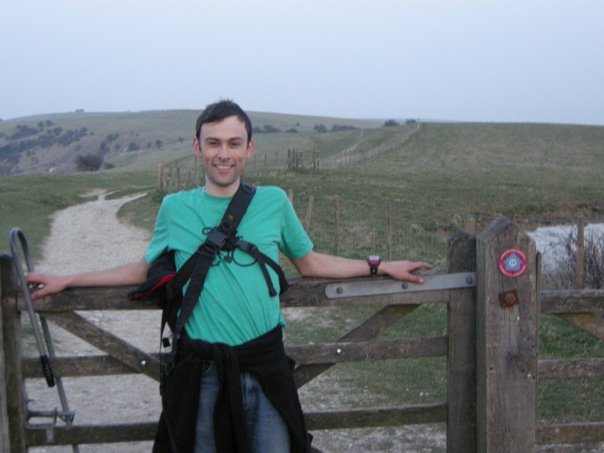
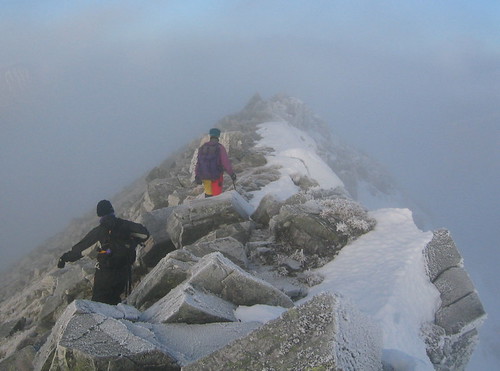


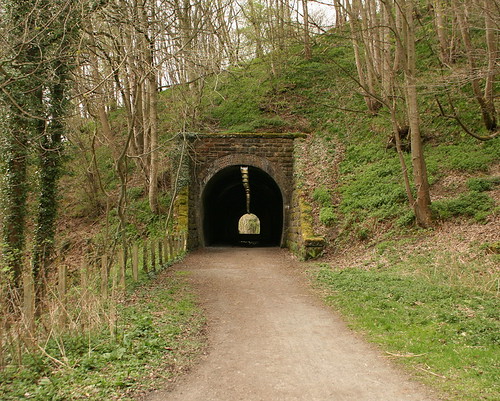
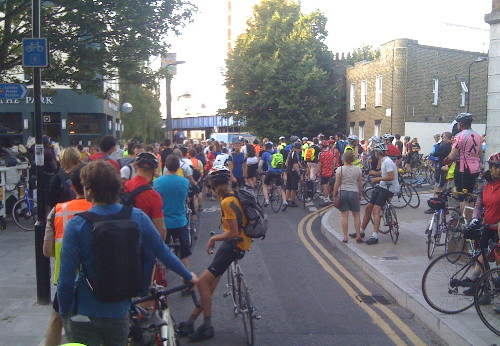
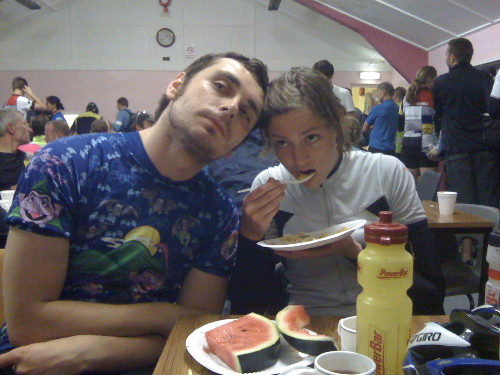
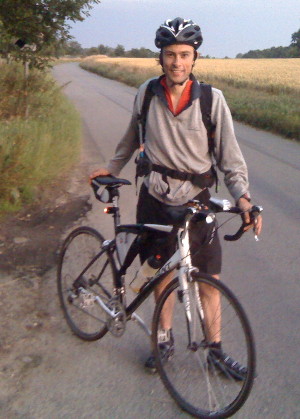 The high point was tearing down the Suffolk Coastal District part in the back of a fast-moving (~35km/h) peloton. The low point was definitely waiting for the rain to clear at Dunwich and dreading the cycle to Ipswich. The most memorable sight was seeing a long stream of flashing red lights in front of me, sweeping around invisible corners.
The high point was tearing down the Suffolk Coastal District part in the back of a fast-moving (~35km/h) peloton. The low point was definitely waiting for the rain to clear at Dunwich and dreading the cycle to Ipswich. The most memorable sight was seeing a long stream of flashing red lights in front of me, sweeping around invisible corners. 